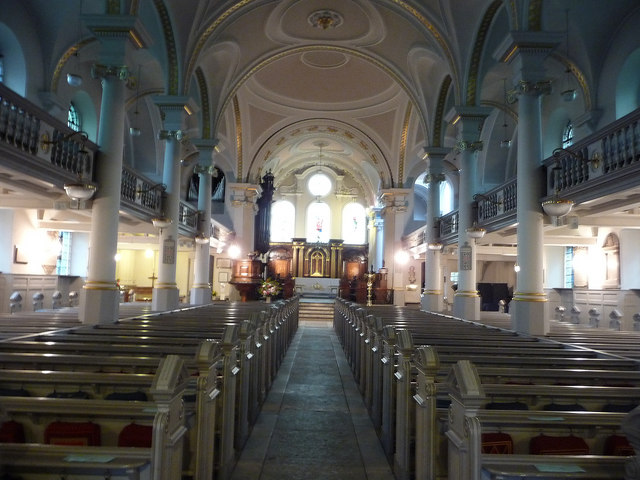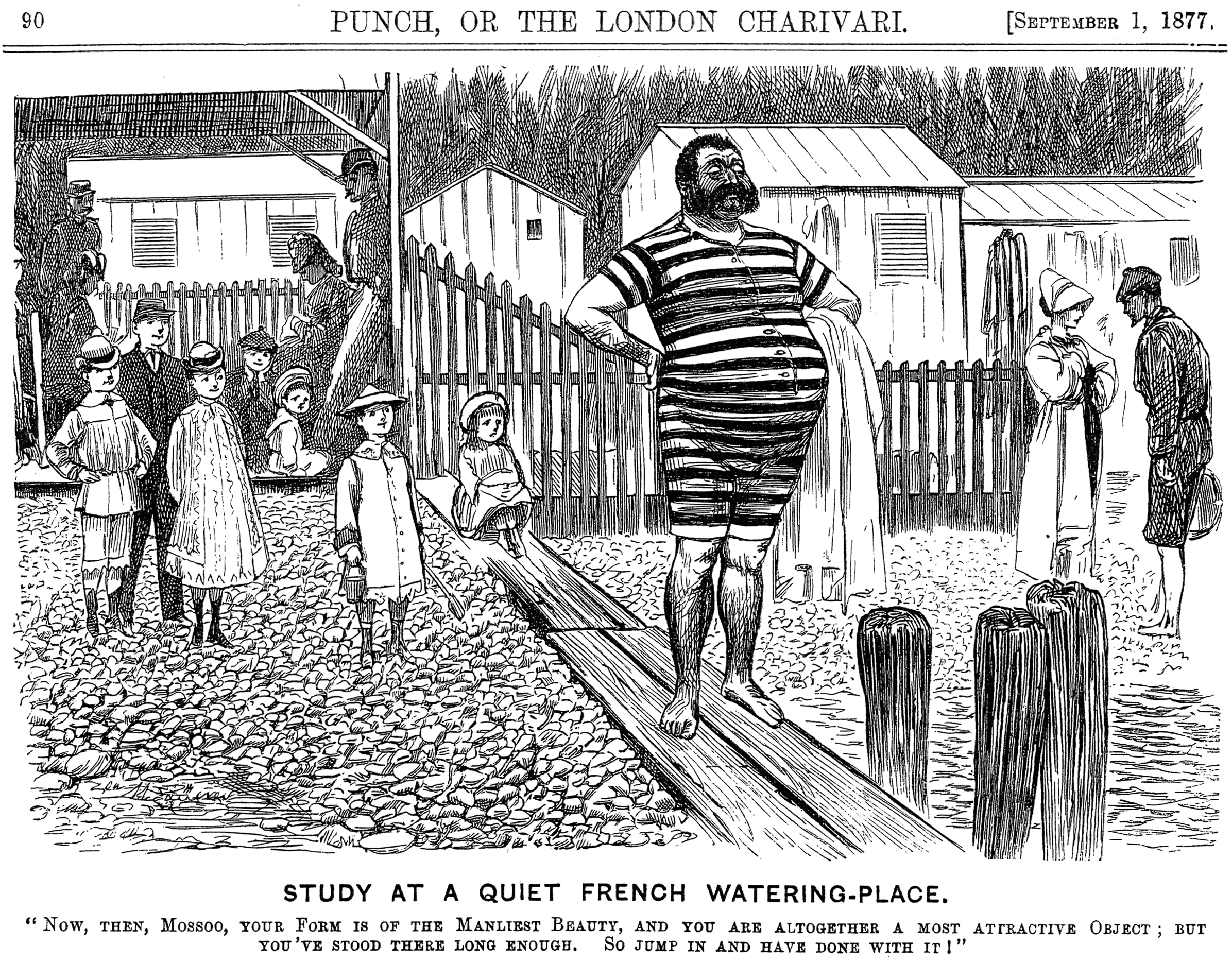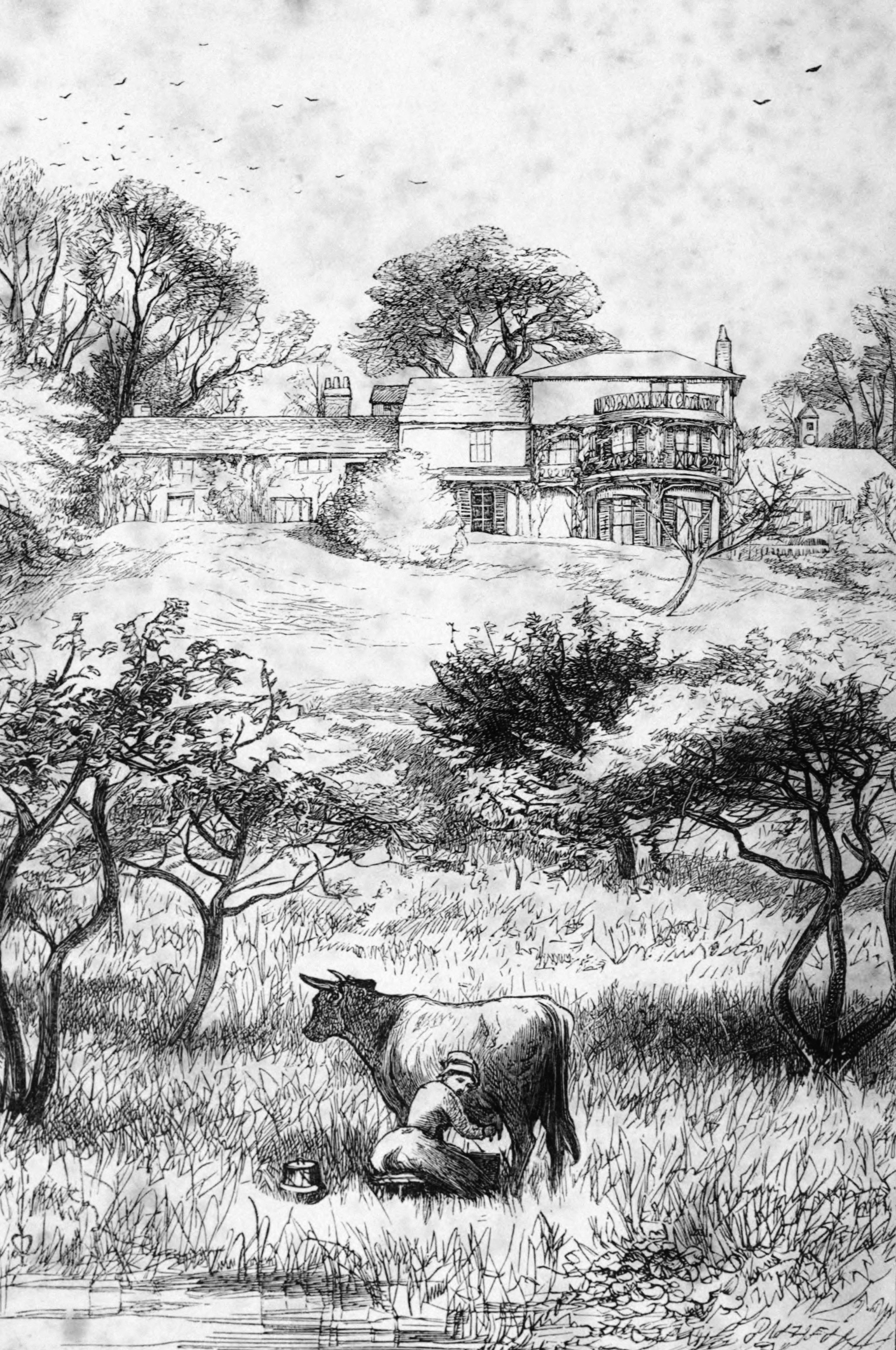|
St John-at-Hampstead
St John-at-Hampstead is a Church of England parish church dedicated to St John the Evangelist (though the original dedication was only refined from St John to this in 1917 by the Bishop of London) in Church Row, Hampstead, London. History Hampstead was granted to the Benedictine monks of Westminster Abbey by charter in 986. It is likely that they placed a church there soon afterwards, but the first records of one come from 1312 (when it was recorded that John de Neuport was its priest) and 1333 (through a mention of a Chapel dedicated to the Blessed Virgin Mary). On the Dissolution of the Monasteries, the Abbey was replaced by the Bishop of Westminster, with its first and only holder Thomas Thirlby also serving as St John's rector. Thirlby appointed Thomas Chapelyne to be St John's vicar in 1545, but the see was abolished in 1551 by Edward VI, with the manor and benefice of Hampstead being granted to Sir Thomas Wrothe. The church of this era was part in stone and part in tim ... [...More Info...] [...Related Items...] OR: [Wikipedia] [Google] [Baidu] |
Church Row, Hampstead
Church Row is a residential street in Hampstead in the London Borough of Camden. Many of the properties are listed on the National Heritage List for England. The street runs from Frognal in the west to Heath Street in the east. St John-at-Hampstead and its additional burial ground is at the west end of the street. Mavis Norris in her ''Book of Hampstead'' describes the street as "the show piece of Hampstead" and it "is almost completely preserved in its early eighteenth-century elegance". The 1998 ''London: North'' edition of the Pevsner Architectural Guides, described Church Row as "the best street in Hampstead" thought it was "better still" before the construction of Gardnor Mansions at the Heath Street end. Ian Nairn, in his 1966 book ''Nairn's London'' describes the design of the street as "complete freedom which results from submission to a common style. A rough gentlemen's agreement about heights and size...and you can do what you want". Nairn was critical of the number of ... [...More Info...] [...Related Items...] OR: [Wikipedia] [Google] [Baidu] |
Thomas Thirlby
Thomas Thirlby (or Thirleby; –1570), was the first and only bishop of Westminster (1540–50), and afterwards successively bishop of Norwich (1550–54) and bishop of Ely (1554–59). While he acquiesced in the Henrician schism, with its rejection in principle of the Roman papacy, he remained otherwise loyal to the doctrine of the Roman Catholic Church during the English Reformation. Life Thomas, was the son of John Thirleby, scrivener and town clerk of Cambridge, and Joan his wife, and was born in the parish of St. Mary the Great, Cambridge, in or about 1506. He received his education at Trinity Hall, Cambridge, graduated bachelor of the civil law in 1521, was elected a fellow of his college, and proceeded doctor of the civil law in 1528, and doctor of the canon law in 1530. It is said that while at the university he, with other learned men who were the favourers of the gospel, though they afterwards relapsed, received an allowance from Queen Anne Boleyn, the Earl of Wil ... [...More Info...] [...Related Items...] OR: [Wikipedia] [Google] [Baidu] |
George Gilbert Scott Jr
George may refer to: People * George (given name) * George (surname) * George (singer), American-Canadian singer George Nozuka, known by the mononym George * George Washington, First President of the United States * George W. Bush, 43rd President of the United States * George H. W. Bush, 41st President of the United States * George V, King of Great Britain, Ireland, the British Dominions and Emperor of India from 1910-1936 * George VI, King of Great Britain, Ireland, the British Dominions and Emperor of India from 1936-1952 * Prince George of Wales * George Papagheorghe also known as Jorge / GEØRGE * George, stage name of Giorgio Moroder * George Harrison, an English musician and singer-songwriter Places South Africa * George, Western Cape ** George Airport United States * George, Iowa * George, Missouri * George, Washington * George County, Mississippi * George Air Force Base, a former U.S. Air Force base located in California Characters * George (Peppa Pig), a 2-year-old ... [...More Info...] [...Related Items...] OR: [Wikipedia] [Google] [Baidu] |
Coventry Patmore
Coventry Kersey Dighton Patmore (23 July 1823 – 26 November 1896) was an English poet and literary critic. He is best known for his book of poetry ''The Angel in the House'', a narrative poem about the Victorian ideal of a happy marriage. As a young man, Patmore worked for the British Museum in London. After the publication of his first book of poems in 1844, he became acquainted with members of the Pre-Raphaelite Brotherhood. After the death of his first wife, his grief over her death became a major theme in his poetry. Patmore is today one of the least-known but best-regarded Victorian poets. Life Youth The eldest son of author Peter George Patmore, Coventry Patmore was born at Woodford in EssexMeynell, Alice. "Coventry Patmore." The Catholic Encyclopedia Vol. 11. New York: Robert Apple ... [...More Info...] [...Related Items...] OR: [Wikipedia] [Google] [Baidu] |
George Du Maurier
George Louis Palmella Busson du Maurier (6 March 1834 – 8 October 1896) was a Franco-British cartoonist and writer known for work in ''Punch'' and a Gothic novel ''Trilby'', featuring the character Svengali. His son was the actor Sir Gerald du Maurier. The writers Angela du Maurier and Dame Daphne du Maurier and the artist Jeanne du Maurier were all granddaughters of George. He was also father of Sylvia Llewelyn Davies and grandfather of the five boys who inspired J. M. Barrie's ''Peter Pan''. Early life George du Maurier was born in Paris, France, son of Louis-Mathurin Busson du Maurier and wife Ellen Clarke, daughter of the Regency courtesan Mary Anne Clarke. He was brought up to believe his aristocratic grandparents had fled from France during the Revolution, leaving vast estates behind, to live in England as émigrés. In fact, du Maurier's grandfather, Robert-Mathurin Busson, was a tradesman who left Paris, France, in 1789 to avoid charges of fraud and later changed th ... [...More Info...] [...Related Items...] OR: [Wikipedia] [Google] [Baidu] |
Anthony Trollope
Anthony Trollope (; 24 April 1815 – 6 December 1882) was an English novelist and civil servant of the Victorian era. Among his best-known works is a series of novels collectively known as the '' Chronicles of Barsetshire'', which revolves around the imaginary county of Barsetshire. He also wrote novels on political, social, and gender issues, and other topical matters. Trollope's literary reputation dipped somewhat during the last years of his life, but he had regained the esteem of critics by the mid-20th century. Biography Anthony Trollope was the son of barrister Thomas Anthony Trollope and the novelist and travel writer Frances Milton Trollope. Though a clever and well-educated man and a Fellow of New College, Oxford, Thomas Trollope failed at the Bar due to his bad temper. Ventures into farming proved unprofitable, and he did not receive an expected inheritance when an elderly childless uncle remarried and had children. Thomas Trollope was the son of Rev. (Thomas) Ant ... [...More Info...] [...Related Items...] OR: [Wikipedia] [Google] [Baidu] |
Ford Madox Brown
Ford Madox Brown (16 April 1821 – 6 October 1893) was a British painter of moral and historical subjects, notable for his distinctively graphic and often William Hogarth, Hogarthian version of the Pre-Raphaelite style. Arguably, his most notable painting was ''Work (painting), Work'' (1852–1865). Brown spent the latter years of his life painting the twelve works known as ''The Manchester Murals'', depicting History of Manchester, Mancunian history, for Manchester Town Hall. Early life Brown was the grandson of the medical theorist John Brown (physician, born 1735), John Brown, founder of the Brunonian system of medicine. His great-grandfather was a Scottish labourer. His father Ford Brown served as a purser in the Royal Navy, including a period serving under Sir Isaac Coffin, 1st Baronet, Sir Isaac Coffin and a period on HMS Arethusa (1781), HMS ''Arethusa''. He left the Navy after the end of the Napoleonic Wars. In 1818, Ford Brown married Caroline Madox, of an ol ... [...More Info...] [...Related Items...] OR: [Wikipedia] [Google] [Baidu] |
Holman Hunt
William Holman Hunt (2 April 1827 – 7 September 1910) was an English painter and one of the founders of the Pre-Raphaelite Brotherhood. His paintings were notable for their great attention to detail, vivid colour, and elaborate symbolism. These features were influenced by the writings of John Ruskin and Thomas Carlyle, according to whom the world itself should be read as a system of visual signs. For Hunt it was the duty of the artist to reveal the correspondence between sign and fact. Of all the members of the Pre-Raphaelite Brotherhood, Hunt remained most true to their ideals throughout his career. He was always keen to maximise the popular appeal and public visibility of his works. Biography Born at Cheapside, City of London, as William Hobman Hunt, to warehouse manager William Hunt (1800–1856) and Sarah (c. 1798–1884), daughter of William Hobman, of Rotherhithe Hunt adopted the name "Holman" instead of "Hobman" when he discovered that a clerk had misspelled t ... [...More Info...] [...Related Items...] OR: [Wikipedia] [Google] [Baidu] |
Edward Burne-Jones
Sir Edward Coley Burne-Jones, 1st Baronet, (; 28 August, 183317 June, 1898) was a British painter and designer associated with the Pre-Raphaelite Brotherhood which included Dante Gabriel Rossetti, John Millais, Ford Madox Brown and Holman Hunt. Burne-Jones worked with William Morris as a founding partner in Morris, Marshall, Faulkner & Co in the design of decorative arts. Burne-Jones's early paintings show the influence of Dante Gabriel Rossetti, but by 1870 he had developed his own style. In 1877, he exhibited eight oil paintings at the Grosvenor Gallery (a new rival to the Royal Academy). These included ''The Beguiling of Merlin''. The timing was right and Burne-Jones was taken up as a herald and star of the new Aesthetic Movement. In the studio of Morris and Co. Burne-Jones worked as a designer of a wide range of crafts including ceramic tiles, jewellery, tapestries, and mosaics. Among his most significant and lasting designs are those for stained glass windows the pr ... [...More Info...] [...Related Items...] OR: [Wikipedia] [Google] [Baidu] |
William Morris
William Morris (24 March 1834 – 3 October 1896) was a British textile designer, poet, artist, novelist, architectural conservationist, printer, translator and socialist activist associated with the British Arts and Crafts Movement. He was a major contributor to the revival of traditional British textile arts and methods of production. His literary contributions helped to establish the modern fantasy genre, while he helped win acceptance of socialism in ''fin de siècle'' Great Britain. Morris was born in Walthamstow, Essex, to a wealthy middle-class family. He came under the strong influence of medievalism while studying Classics at Oxford University, there joining the Birmingham Set. After university, he married Jane Burden, and developed close friendships with Pre-Raphaelite artists Edward Burne-Jones and Dante Gabriel Rossetti and with Neo-Gothic architect Philip Webb. Webb and Morris designed Red House in Kent where Morris lived from 1859 to 1865, before moving t ... [...More Info...] [...Related Items...] OR: [Wikipedia] [Google] [Baidu] |
Lewis Vulliamy
Lewis Vulliamy (15 March 1791 – 4 January 1871) was an English architect descended from the Vulliamy family of clockmakers. Life Lewis Vulliamy was the son of the clockmaker Benjamin Vulliamy. He was born in Pall Mall, London on 15 March 1791, and articled to Sir Robert Smirke. He was admitted to the Royal Academy Schools in 1809, where he won the silver medal the year after for an architectural drawing, and the gold medal in 1813. He was elected Royal Academy travelling student in 1818, after which he studied abroad for four years, mostly in Italy, but also visiting Greece and Asia Minor. He was a great-uncle of the art potter Blanche Georgiana Vulliamy. Vulliamy died at Clapham Common, on 4 January 1871. Works *speculative housing in Tavistock Square and Gordon (later Endsleigh) Place in Bloomsbury (1827) *Neo-Gothic churches in the London area **St Bartholomew's, Sydenham (1826–31) **St Barnabas's, Addison Road, Kensington (1828–9) **St Michael's, Highgate (1830 ... [...More Info...] [...Related Items...] OR: [Wikipedia] [Google] [Baidu] |






.jpg)
